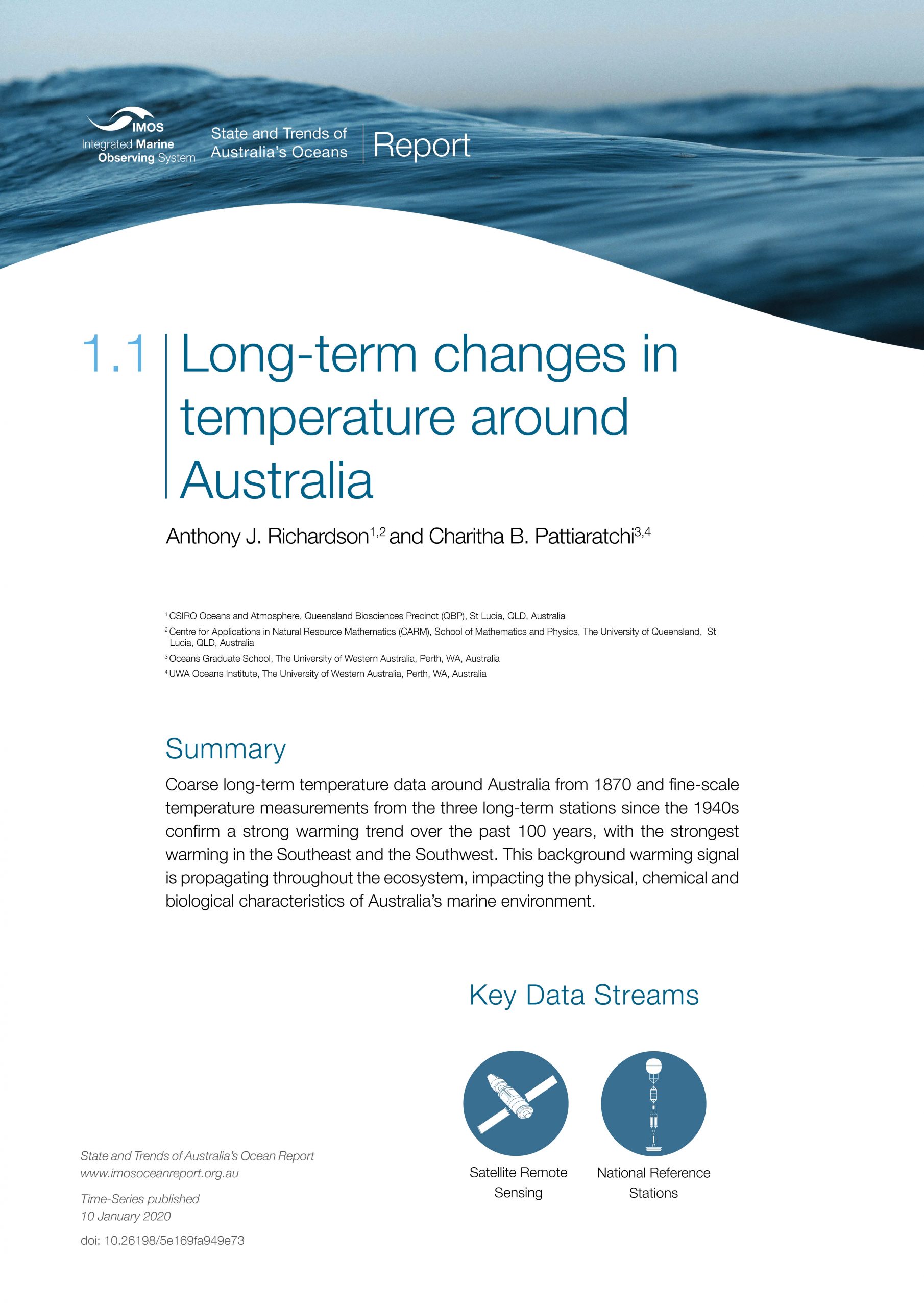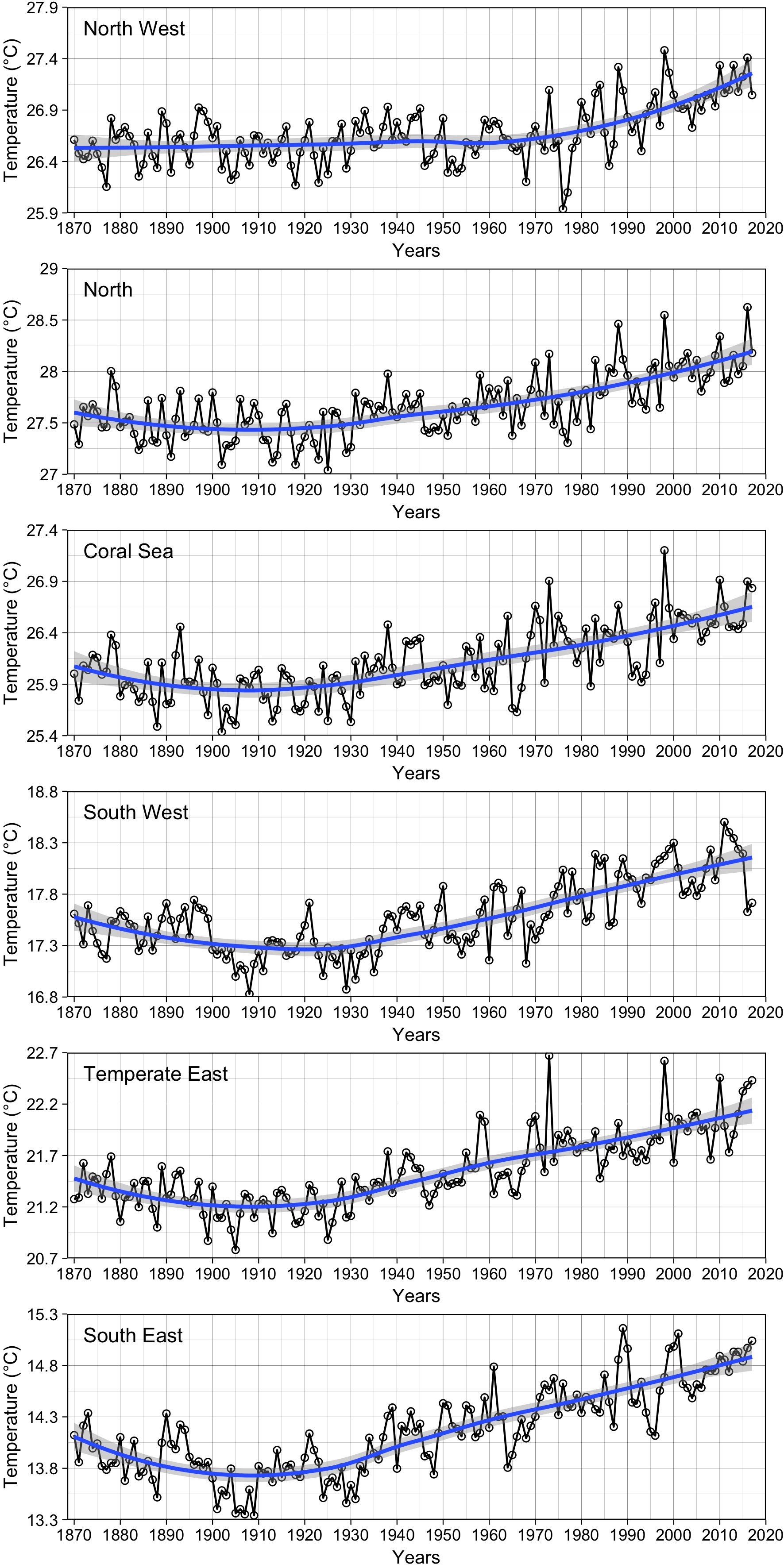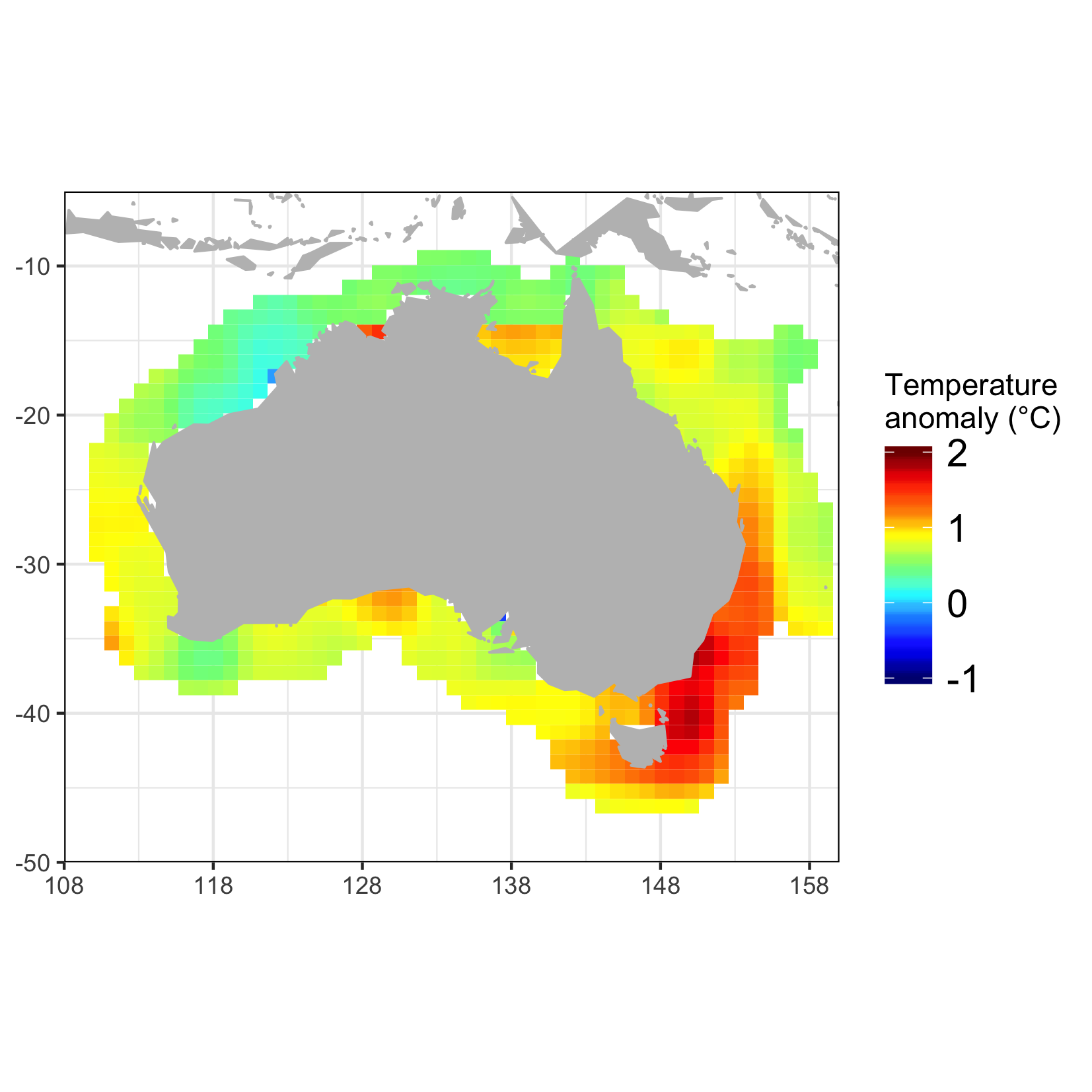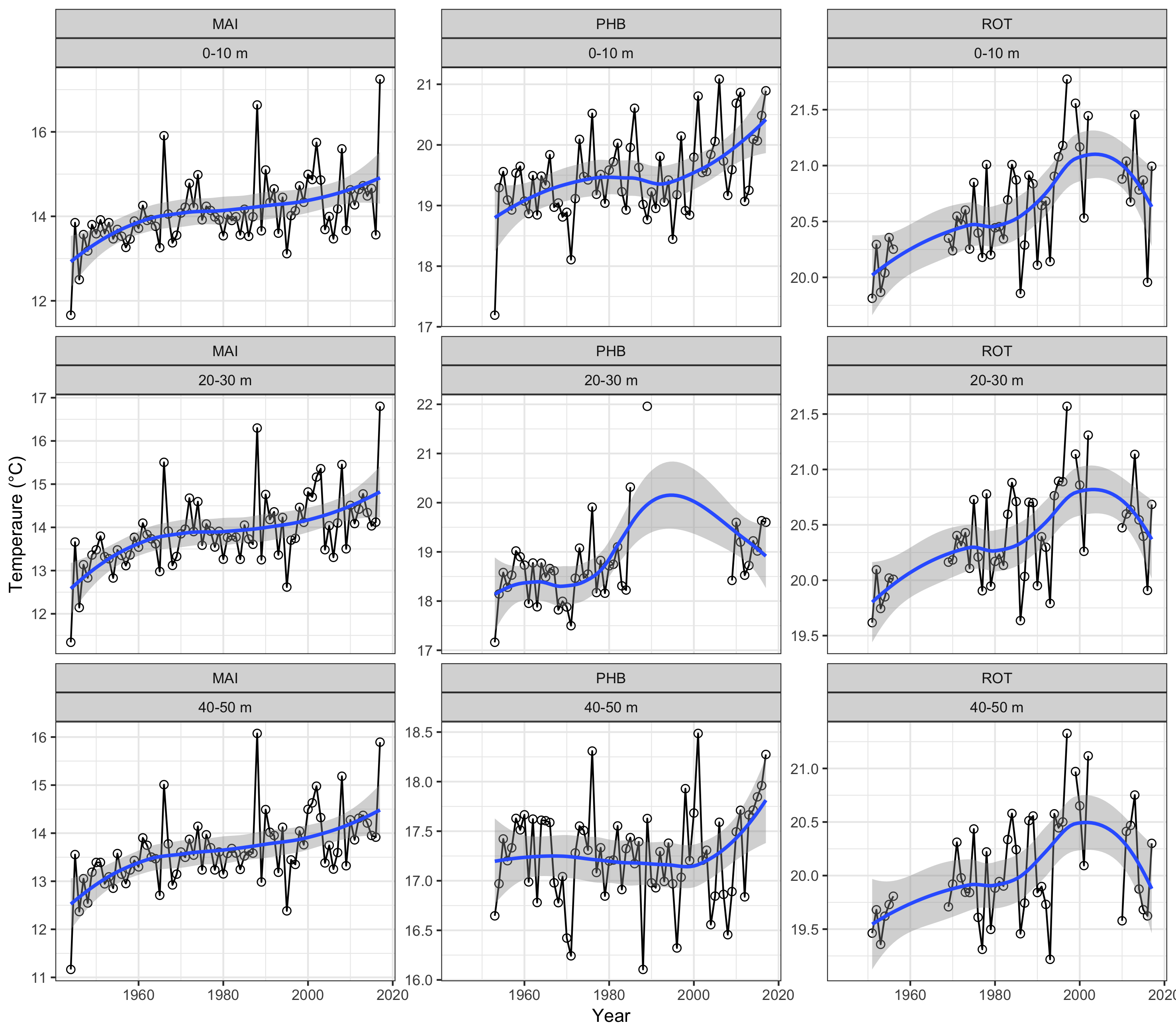Contributors
Anthony J. Richardson 1,2
Charitha B. Pattiaratchi 3,4
1 CSIRO Oceans and Atmosphere, Queensland Biosciences Precinct (QBP), St Lucia, QLD, Australia
2 Centre for Applications in Natural Resource Mathematics (CARM), School of Mathematics and Physics, The University of Queensland, St Lucia, QLD, Australia
3 Oceans Graduate School, The University of Western Australia, Perth, WA, Australia
4 UWA Oceans Institute, The University of Western Australia, Perth, WA, Australia
Key Information
Coarse long-term temperature data around Australia from 1870 and fine-scale temperature measurements from the three long-term stations since the 1940s confirm a strong warming trend over the past 100 years, with the strongest warming in the Southeast and the Southwest. This background warming signal is propagating throughout the ecosystem, impacting the physical, chemical and biological characteristics of Australia’s marine environment.
Keywords
warming, long-term stations, East Australian Current, HadISST
Long-term changes in temperature around Australia
Download this Time Series Report
Citing this report:
Richardson A.J, Pattiaratchi C.B. (2020) Long-term change sin temperature around Australia. In Richardson A.J, Eriksen R, Moltmann T, Hodgson-Johnston I, Wallis J.R. (Eds). State and Trends of Australia’s Ocean Report. doi: 10.26198/5e169fa949e73
doi: 10.26198/5e169fa949e73







